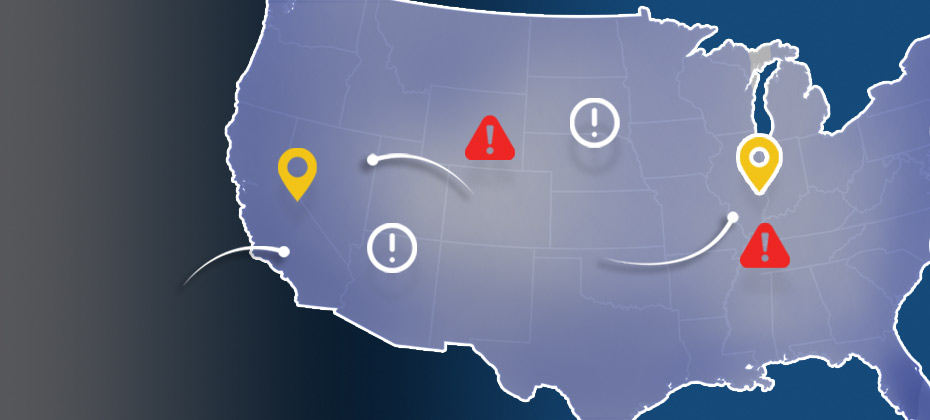Apply DA Tag

Best practices and innovative strategies for banking to millennials Before we begin, a disclaimer: Banking to millennials is a long-term strategy. Many marketing campaigns will not drive immediate returns on investment, but they lay the groundwork for a lifelong, mutually beneficial relationship. Now, some good news. Millennials are just beginning their financial journey — getting ready to embark on a life that includes homes, cars, families and small businesses. Connecting with this generation today can bode well for a financial institution’s success tomorrow. With a strong relationship in place, millennials will turn to that organization when they are ready to fund their life events. Below are some key strategies that will help financial institutions build and continue banking to millennials. Keeping up with technological expectations Millennials were raised in the digital age, and therefore mobile devices are the hubs of their digital lives. They expect real-time access to their accounts for peer-to-peer payments, deposits, paying bills and customer service. Not meeting their digital expectations could drive them to seek another — more technology-oriented — financial institution that embraces CNP, mobile apps and social media. Authentic and targeted marketing messaging Millennials expect targeted messaging. Generic, catchall offers of the past fall flat for them. They want banks to figure out who they are, what they need and how they can access it with the tap of a finger. Additionally, messages to millennials should have a genuine voice that advises and supports them in achieving their goals. Many millennials are interested in taking control of their financial lives but are not prepared to do so. This is a great opportunity for financial institutions to introduce themselves. Connect millennials to something bigger Earning a millennial’s trust is one of the greatest challenges for financial institutions. While money is important, millennials are motivated by becoming a part of something bigger than themselves. Institutions can connect with millennials by creating opportunities to give back or pay-it-forward. Examples include encouraging growth in underbanked markets, such as lending circles, peer-to-peer lending and small-business lending, or partnering with local universities and nonprofits. Strategic segmentation Millennials are the most diverse population group — yet strategic segmentation is still possible. One ideal segment is recent college graduates. As a group, they yield a much different profile than their counterparts without degrees. These ambitious millennials are more likely to focus on life choices that require major financial considerations, such as getting married, having children, buying their first home and earning higher salaries. These life events will require a diverse set of financial services products, and millennials will turn to the institution that has gained their trust first. Millennials are one of the most important markets as financial institutions look to invest in future, long-term growth. Financial institutions need to show millennials that they’re committed to listening and to laying the groundwork for relationships that will help them achieve their dreams. Remember, though, reaching this audience is not about an immediate return on investment but rather a long-term strategy to develop trust and brand preference. Begin the relationship now to reap the rewards later. For more insights and innovative strategies on how to best market and develop a strong relationship with millennials, download our recent white paper, Building lasting relationships with millennials.

According to Experian’s State of the Automotive Finance Market report, the average amount financed for a new vehicle in Q4 2015 was $29,551 — up $1,170 from 2014 and the highest amount on record since Experian began tracking auto loan amounts in 2008.

According to a recent Experian study, women handle money, debt and financial decisions better than men.

When checking access accounts were first introduced, it wasn’t uncommon for banks to provide new customers “basic” transaction services in starter checking accounts. These services typically included an automatic teller machine (ATM) access card and the ability to withdraw cash at their local branch. As consumers developed a relationship and established financial trust with their bank, they eventually would get a checkbook, which allowed check-writing access. This took time and a consumer demonstrating both the willingness and ability to manage finances to the bank’s expectations. Establishing the financial relationship was a trust-building process. With the onset of general-purpose debit cards and a host of other digital money-movement capabilities, such as online banking, the majority of banks now offer just basic and preferred checking. A minimum acceptance standard leaves many consumers out of the financial transaction system, which is something that concerns regulatory bodies such as the Consumer Financial Protection Bureau (CFPB). Approval criteria vary across financial institutions, but a typical basic checking account has some form of overdraft feature enabled, and some consumers may not be able to afford these fees even if they elect to opt in for overdraft functionality. Nonetheless, banks still screen applicants to ensure prior accounts at other institutions were managed with no losses incurred by other banks. In today’s modern world, it is difficult to participate fully in our credit-driven society without a checking account at a recognized bank or credit union. The answer in many cases would be checking accounts for consumers that have either overdraft functionality assigned based on the consumer’s wish to opt in or overdraft access that matches that same consumer’s ability to pay. In early February, the CFPB passed new guidelines to increase access to basic check products. While a step towards making checking accounts available to all, the most recent actions still leave unresolved regulatory actions regarding what the CFPB refers to as “affordable” checking access. For instance, for those consumers without disposable income, the issue of fees for overdraft and nonsufficient funds is still an unresolved regulatory matter. In the most recent announcement, the CFPB took several actions related to its focus on increasing consumer access to checking transaction accounts with banks: Sending a letter to CEOs of the top 25 banks encouraging them to take steps to help consumers with affordable checking account access such as “no fee” and/or “no overdraft” checking accounts Providing several new resources to consumers such as a guide to “Low Risk Checking, Managing Checking and Consumer Guide to Checking Account Denial” Introducing the Consumer Protection Principles, which include a drive toward: Faster funds availability Improved consumer transparency into checking account fee structure, funds availability and security Tailoring products to reach a larger percentage of consumers Developing no-overdraft type checking products, which only a handful of large banking institutions had What lurks ahead for banks is the need to develop products that are designed to reach a larger population that includes under banked and unbanked consumers with troubled financial repayment history. Coupling this product development effort with the CFPB desire for no-overdraft-fee type products makes me wonder if we should look to account features from several decades ago, such as creating a 21st century version of the checking account with digital money-movement features that protects consumers’ privacy, but doesn’t put them in a position to rack up large amounts of overdraft fees they can’t afford to pay in the event they overdraw the checking account. Experian® suggests taking the following steps: Conduct a Business Review to ensure that your product offering includes the type of account the CFPB is advocating and your existing core banking platform can operationalize this account Align your checking account prospect and opening procedures to key segments to ensure more consumers are approved and right-sized to the appropriate checking product Enhance your business profitability by cross-selling credit products that fit the affordability and disposable income of various consumer segments you originate These steps will make your journey “back to the future” much less turbulent and ensure you don’t break the bank in your efforts to address CFPB’s well-intentioned focus on check access for consumers.

Millions of people around the world are wearing green to celebrate St. Patrick's Day today. Some interesting facts on the color: Green is associated with St. Patrick's Day because it is the color of spring, Ireland and the shamrock Green ink originally was used in U.S. currency to prevent counterfeiting and because of its resistance to chemical and physical changes The Chicago River is colored green for the St. Patrick's Day parade each year using 45 pounds of vegetable dye >> Gain insights and earn more green with the Market Intelligence Brief

Identity management traditionally has been made up of creating rigid verification processes that are applied to any access scenario. But the market is evolving and requiring an enhanced Identity Relationship Management strategy and framework. Simply knowing who a person is at one point in time is not enough. The need exists to identify risks associated with the entire identity profile, including devices, and the context in which consumers interact with businesses, as well as to manage those risks throughout the consumer journey. The reasoning for this evolution in identity management is threefold: size and scope, flexible credentialing and adaptable verification. First, deploying a heavy identity and credentialing process across all access scenarios is unnecessarily costly for an organization. While stringent verification is necessary to protect highly sensitive information, it may not be cost-effective to protect less-valuable data with the same means. A user shouldn’t have to go through an extensive and, in some cases, invasive form of identity verification just to access basic information. Second, high-friction verification processes can impede users from accessing services. Consumers do not want to consistently answer multiple, intrusive questions in order to access basic information. Similarly, asking for personal information that already may have been compromised elsewhere limits the effectiveness of the process and the perceived strength in the protection. Finally, an inflexible verification process for all users will detract from a successful customer relationship. It is imperative to evolve your security interactions as confidence and routines are built. Otherwise, you risk severing trust and making your organization appear detached from consumer needs and preferences. This can be used across all types of organizations — from government agencies and online retailers to financial institutions. Identity Relationship Management has three unique functions delivered across the Customer Life Cycle: Identity proofing Authentication Identity management Join me at Vision 2016 for a deeper analysis of Identity Relationship Management and how clients can benefit from these new capabilities to manage risk throughout the Customer Life Cycle. I look forward to seeing you there!

Top states for billing and shipping e-commerce fraud With more than 13 million fraud victims in 2015, assessing where fraud occurs is an important layer of verification for e-commerce. Experian® analyzed millions of e-commerce transactions from 2015 to identify fraud attack rates across the United States. With the switch to chip-enabled credit card transactions and possible growth of card-not-present fraud, online businesses should utilize advanced fraud solutions to monitor their riskiest locations and prevent losses. >> View the Experian map to see 2015 e-commerce attack rates for all states

Proven identity and device authentication to minimize identity tax return fraud Identity fraud places an enormous burden on its victims and presents a challenge to businesses, organizations and government agencies, including the IRS and all state revenue authorities. Tax return fraud occurs when an attacker uses a consumer’s stolen Social Security number and other personal information to file a tax return, often claiming a significant refund. The IRS is challenged by innovative fraudsters continually trying to outsmart its current risk strategies around prevention, detection, recovery and victim assistance. And with the ever-increasing number of identity data compromised and tax return fraud victims, it’s necessary to question whether tax preparation companies are doing all they can to keep personally identifiable information (PII) secure and screen for fraud before forms are submitted. “ID theft isn’t just credit card fraud,” said Rod Griffin, Director of Public Education for Experian. A recent Experian online survey indicated that nearly 76 percent of consumers are familiar with ID theft and tax fraud — up significantly from the past two years. And 28 percent of those surveyed have been a victim or know a victim of tax fraud. To protect all parties’ interests, tax preparation agencies are challenged by today’s savvy fraudsters who have reaped the benefits of recent breaches. In order to protect consumers, organizations need to apply comprehensive, data-driven intelligence to help thwart identity fraud and the use of stolen identity data via fraudulent returns. The key to securing transactions, reducing friction and providing a consistently satisfying customer experience, online and offline, is authenticating consumers in a clear and frictionless environment. As a result, it’s necessary to have reliable customer intelligence based on both high-quality contextual identity and device attributes alongside other authentication performance data. Comprehensive customer intelligence means having a holistic, bound-together view of devices and identities that equips companies and agencies with the tools to balance cost and risk without increasing transactional friction. Businesses and agencies must not rely on a singular point of customer intelligence gathering and decisioning, but must move to more complex device identification and out-of-wallet verification procedures. Effective solutions typically involve a layered approach with several of the following: Identity transaction link analysis and risk attribute derivation Device intelligence and risk assessment Credit and noncredit data and risk attributes Multifactor authentication, using one-time passcodes via SMS messaging Identity risk scores Dynamic knowledge-based authentication questions Traditional PII validation and verification Biometrics and remote document verification Out-of-band alerts, communications and confirmations Contextual account, transaction and channel purview Additionally, government agencies must adhere to recognized standards, such as those prescribed by the National Institute of Standards and Technology to establish compliance. The persistent threat of tax fraud highlights the urgent need for businesses and agencies to continue educating consumers and more importantly, to improve the strategic effectiveness of their current solutions processes. Learn more about Experian Fraud and Identity Solutions, including government-specific treatments, and how the most effective fraud prevention and identity authentication strategy leverages multiple detection capabilities to highlight attackers while enabling a seamless, positive experience for legitimate consumers.

Bankcard origination volumes reached $97.5 billion in Q4 2015, the highest level on record since Q3 2008 and an increase of 22% over the same quarter in 2014. The 60–89-days-past-due bankcard delinquency rate came in at .53% for Q4 2015 — significantly lower than the 1.22% delinquency rate back in Q3 2008. The increase in bankcard originations combined with lower delinquencies points to a positive credit environment. Lenders should stay abreast of the latest bankcard trends in order to adjust lending strategies and capitalize on areas of opportunity. >> Key steps to designing a profitable bankcard campaign

2015 data shows where billing and shipping e-commerce fraud attacks occur in the United States Experian e-commerce fraud attacks and rankings now available Does knowing where fraud takes place matter? With more than 13 million fraud victims in 2015,[1] assessing where fraud occurs is an important layer of verification when performing real-time risk assessments for e-commerce. Experian® analyzed millions of e-commerce transactions from 2015 data to identify fraud-attack rates across the United States for both shipping and billing locations. View the Experian map to see 2015 e-commerce attack rates for all states and download the top 100 ZIP CodeTMrankings. “Fraud follows the path of least resistance. With more shipping and billing options available to create a better customer experience, criminals attempt to exploit any added convenience,” said Adam Fingersh, Experian general manager and senior vice president of Fraud & Identity Solutions. “E-commerce fraud is not confined to larger cities since fraudsters can ship items anywhere. With the switch to chip enabled credit card transactions, and possible growth of card-not-present fraud, our fraud solutions help online businesses monitor their riskiest locations to prevent losses both in dollars and reputation in the near term.” For ease of interpretation, billing states are associated with fraud victims (the address of the purchaser) and shipping states are associated with fraudsters (the address where purchased goods are sent). According to the 2015 e-commerce attack rate data: Florida is the overall riskiest state for billing fraud, followed by Delaware; Washington, D.C.; Oregon and California. Delaware is the overall riskiest state for shipping fraud, followed by Oregon, Florida, California and Nevada. Eudora, Kan., has the overall riskiest billing ZIP Code (66025). The next two riskiest ZIPTM codes are located in Miami, Fla. (33178) and Boston, Mass. (02210). South El Monte, Calif., has the overall riskiest shipping ZIP Code (91733). The next four riskiest shipping ZIP codes are all located in Miami. Overall, five of the top 10 riskiest shipping ZIP codes are located in Miami. Defiance, Ohio, has the least risky shipping ZIP Code (43512). The majority of U.S. states are at or below the average attack rate threshold for both shipping and billing fraud, with only seven states — Florida, Oregon, Delaware, California, New York, Georgia and Nevada — and Puerto Rico ranking higher than average. This indicates that attackers are targeting consumers equally in the higher-risk states while leveraging addresses from both higher- and lower-risk states to ship and receive fraudulent merchandise. Many of the higher-risk states are located near a large port-of-entry city, including Miami; Portland, Ore.; and Washington, D.C., perhaps allowing criminals to move stolen goods more effectively. All three cities are ranked among the riskiest cities for both measures of fraud attacks. Neighboring proximity to higher-risk states does not appear to correlate to any additional risk — Pennsylvania and Rhode Island are ranked as two of the lower-risk states for both shipping and billing fraud. Other lower-risk states include Wyoming, South Dakota and West Virginia. Experian analyzed millions of e-commerce transactions to calculate the e-commerce attack rates using “bad transactions” in relation to the total number of transactions for the 2015 calendar year. View the Experian map to see 2015 e-commerce attack rates for all states and download the top 100 ZIP Code rankings. [1]According to the February 2016 Javelin study 2016 Identity Fraud: Fraud Hits an Inflection Point.

A recent survey commissioned by VantageScore® Solutions, LLC found that among consumers who are unable to obtain credit, 27% attribute the situation to lack of a credit score. Most consumers support newer methods of calculating credit scores 49% feel that consistent rental, utility and telecommunications payments should count in determining credit scores 50% agree that competition in the credit scoring marketplace is beneficial Lenders can help solve the credit gap by using advanced risk models that can accurately score more consumers. The result is a win-win: More consumers get access to mainstream credit, and lenders gain more customers. >> Infographic: America’s Giant Credit Gap VantageScore® is a registered trademark of VantageScore Solutions, LLC.

Loyalty fraud and the customer experience Criminals continue to amaze me. Not surprise me, but amaze me with their ingenuity. I previously wrote about fraudsters’ primary targets being those where they easily can convert credentials to cash. Since then, a large U.S. retailer’s rewards program was attacked – bilking money from the business and causing consumers confusion and extra work. This attack was a new spin on loyalty fraud. It is yet another example of the impact of not “thinking like a fraudster” when developing a program and process, which a fraudster can exploit. As it embarks on new projects, every organization should consider how it can be exploited by criminals. Too often, the focus is on the customer experience (CX) alone, and many organizations will tolerate fraud losses to improve the CX. In fact, some organization build fraud losses into their budgets and price products accordingly — effectively passing the cost of fraud onto the consumers. Let’s look into how this type of loyalty fraud works. The criminal obtains your login credentials (either through breach, malware, phishing, brute force, etc.) and uses the existing customer profile to purchase goods using the payment method on file for the account. In this type of attack, the motivation isn’t to receive physical goods; instead, it’s to accumulate rewards points — which can then be used or sold. The points (or any other form of digital currency) are instant — on demand, if you will — and much easier to fence. Once the points are credited to the account, the criminal cashes them out either by selling them online to unsuspecting buyers or by walking into a store, purchasing goods and walking right out after paying with the digital currency. A quick check of some underground forums validates the theory that fraudsters are selling retailer points online for a reduced rate — up to 70 percent off. Please don’t be tempted to buy these! The money you spend will no doubt end up doing harm, one way or another. Now, back to the customer experience. Does having lax controls really represent a good customer experience? Is building fraud losses into the cost of your products fair to your customers? The people whose accounts have been hacked most likely are some of your best customers. They now have to deal with returning merchandise they didn’t purchase, making calls to rectify the situation, having their personally identifiable information further compromised and having to pay for the loss. All in all, not a great customer experience. All businesses have a fiduciary responsibility to protect customer data with which they have been entrusted — even if the consumer is a victim of malware, phishing or password reuse. What are you doing to protect your customers? Simple authentication technologies, while nice for the CX, easily can fail if the criminal has access to the login credentials. And fraud is not a single event. There are patterns and surveillance activities that can help to detect fraud at every phase of your loyalty program — from new account opening to account logins and updates to transactions that involve the purchase of goods or the movement of currency. As fraudsters continue to evolve and look for the least-protected targets, loyalty programs have come to the forefront of the battleground. Take the time to understand your vulnerability and how you can be attacked. Then take the necessary steps to protect your most profitable customers — your loyalty program members. If you want to learn more, join us MRC Vegas 16 for our session “Loyalty Fraud; It’s Brand Protection, Not Just Loss Prevention” and hear our industry experts discuss loyalty fraud, why it’s lucrative, and what organizations can do to protect their brand from this grey-area type of fraud.

According to Experian’s latest State of the Automotive Finance Market report, auto loan balances reached an all-time high of $987 billion in Q4 2015 — an increase of 11.5% over Q4 2014.

Compliance definitions LOA, CIP, FACTA, KYC — These acronyms seem endless, and navigating compliance can be both confusing and a painful drain on resources. How do you know the best approach for your institution? Should you look at regulations for Know Your Customer (KYC) or the Customer Identification Program (CIP)? What about the levels of assurance (LOAs) or the Fair and Accurate Credit Transactions Act (FACTA) Red Flags Rule? Does the USA PATRIOT Act affect your industry? The myriad guidelines, rules and mandates surrounding fraud compliance are changing the way organizations do business. Let’s start with some brief definitions. CIP/KYC The Customer Identification Program requires banks to form a reasonable belief that they know the true identity of each customer. The CIP must include procedures that specify the identifying information that will be obtained from each customer, along with reasonable and practical risk-based procedures for verifying each customer’s identity. The Know Your Customer provision is a financial regulatory rule mandated by the Bank Secrecy Act and the USA PATRIOT Act. These guidelines focus on prevention of money laundering and the use of financial institutions to finance terrorist activities. This process has three stages: the CIP, customer due diligence (CDD) and enhanced due diligence (EDD). The last two stages address customer risk from an anti–money laundering perspective. LOA/FACTA (Red Flags Rule) Levels of assurance regarding identity focus on the extent to which electronic authentication may be used to verify that the individual identified in the input data truly is the same person engaging in the electronic transaction. This can be a daunting task — even the National Institute of Standards and Technology acknowledges that electronic authentication of individual people is a technical challenge when performed remotely over an open network. To choose the level of assurance that works within your company structure, you must determine what is needed to maintain the internal compliance and risk thresholds for each business requirement. LOAs are based on two categories: trustworthiness of the identity-proofing process and trustworthiness of the credential-management function (which includes technology and implementation/management). There are four LOA levels: Minimal Assurance Moderate Assurance Substantial Assurance High Assurance The FACTA Red Flags Rule requires institutions to establish a program that identifies ecommerce “red flags.” This program should consist of a pattern, practice or specific activity that indicates the possible existence of identity theft applicable to account-opening activities, existing account maintenance and new activity on accounts that have been inactive for two years or more. Don’t be discouraged In this world of compliance regulations that read like alphabet soup, we understand the challenges of meeting regulations while providing a frictionless customer experience. When an organization strikes the perfect balance between compliance and customer service, it has a competitive advantage that can lead to additional revenue opportunities (e.g., profitably acquiring new customers, detecting fraud and reducing charge-offs, minimizing operational costs, and improving operational efficiencies). To achieve this, businesses need cost-effective, flexible tools that allow them to meet current and future guidelines, manage risk and ultimately authenticate as many true customers as possible — all while segmenting out only the real fraudsters and noncompliant identities. You can be assured that new regulations will come, existing regulations will be redefined and communications on how to comply will be difficult to interpret. To find out more about compliance, click here.

A recent Experian survey shows a growing concern over identity theft and tax fraud. 42% of consumers are concerned that someone could access their personal data through their tax return, compared with 35% in 2014 and 38% in 2015 28% of consumers have been a victim or know someone who has been a victim of tax fraud Tax season is a busy time of year for identity thieves. While consumers should take steps to protect themselves, businesses also need to employ ID theft protection solutions in order to safeguard consumer information. >> Identify and prevent multiple types of fraud